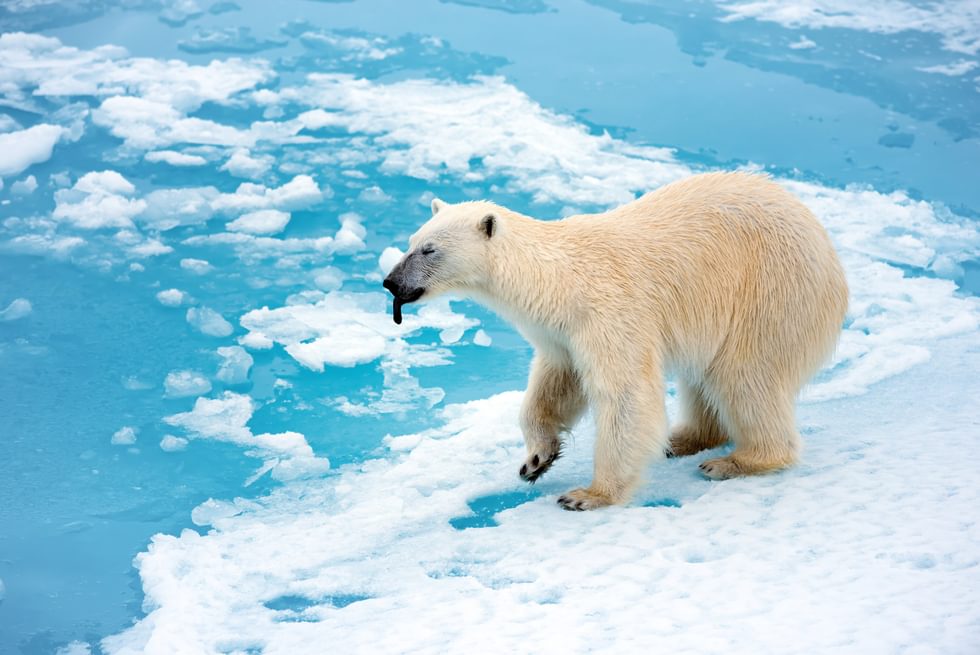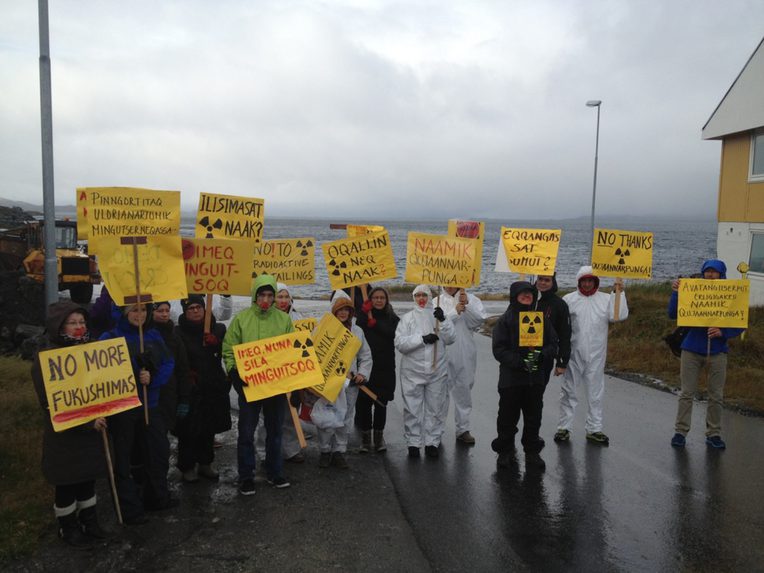The Making of Resource Spaces in Greenland
From the Series: Arctic Abstractive Industry
From the Series: Arctic Abstractive Industry

A resource frontier is being imagined, made, and pushed back in Greenland. International energy and mining companies have identified the potential for this self-governing territory of the Danish Realm to become a significant source of mineral and oil extraction for the global economy. This search for and eventual production of subsurface resources continues to be a stated aim of the Greenlandic government despite a fall in global commodity prices for minerals and the withdrawal of some oil companies from Arctic exploration from 2014 onwards. Greenlandic political and business elites remain hopeful for offshore oil discoveries, but the possibility of hydrocarbon development in the near future is in some doubt: there has been a scaling down of seismic survey and well-drilling activities, even as new efforts are being made to promote mining as a major industry.
Some resource projects in Greenland have been objects of speculation and ambition for decades, while others have only become so more recently. Some projects have precipitated intense excitement about their possible financial returns and have appeared to come close to the construction and operational phases, only to collapse. Still others have been slow burners in terms of initial planning and securing financial backing, but they may well become operational within the next few years.
Industrial resource development is tied up with Greenland’s self-government agreement and is inextricably linked to Greenlandic ambitions for independence. Subsurface politics and venture capitalism change quickly in Greenland, but the basic political agreement, reinforced by the Government of Greenland's Mineral Strategy, is that Greenland’s minerals sector should form one basis for the economy. Considerable effort is being put into geological investigations, attracting mining companies to Greenland, enticing investors, and increasing knowledge of potential mineral-bearing geological environments. As climate change makes Greenland supposedly less icy and greener, it is undergoing a representational shift from an extreme environment that hinders resource exploration and extraction to a place that is open for business. Accompanying this is a seductive narrative that suggests previously remote, ice-bound places are now easily accessible.
Mining activities, oil exploration, seismic surveys and subsurface mappings, and large-scale industrial development plans such as hydropower projects have provoked considerable political and social debates within Greenland—as they have in the Kingdom of Denmark more broadly—about the impact of such development on society and the environment. Topics of debate include the absence of appropriate public participation and consultation in decision-making and regulatory processes, concerns about the impacts of extractive industries on hunting and fishing activities, the shortcomings of social and environmental impact assessments, and the possible influx of several thousand foreigners to work in the construction and operational phases of megaprojects (Nuttall 2015). At the same time, contested perceptions and understandings of the environment—what it means, what it should be used for, and how it should be protected—have become apparent. Local people, grassroots organizations, and environmental groups have expressed concerns about threats to community viability, human health, wildlife, and entire ecosystems from oil development and the extraction of iron, gold, and rare earths. These concerns are heightened in relation to the possibility of uranium mining, which has conjured an imagined future of biohazards and environmental ruin.

All of this might read as a familiar story of frontiers as meeting places and zones of colonial and capitalist encounters. But it is also a process consistent with what Anthony Bebbington, Nicholas Cuba, and John Rogan (2014) have called a phenomenon of “overlapping geographies” associated with the expansion of extractive industries. These authors point to different ideas about who should access, use, and occupy particular spaces, as well as who should govern and control what goes on in those spaces. Practices of deterritoriality and processes of erasure are increasingly apparent in Greenland. Particular places are defined and marked off as resource spaces and become zones of sacrifice. The planning for—and desired expansion of—extractive industries involves very specific political, volumetric, and stratigraphic procedures and practices that are used to define, demarcate, lay claim to, and regulate such places as resources spaces. These places have constituted a rich, lively, and often astonishing world of past and present Inuit societies, with intricate human-animal and human-environment relations. But they must then undergo a process of unmaking into empty spaces and frontier zones that consultants represent in reports and public hearings as wilderness areas: low in biodiversity and empty of human presence, yet potentially rich in subsurface resources.
In recent years, my work has sought to show how this plays out through a focus on planned mines in the Nuuk Fjord region and oil exploration in the northwest coastal areas of Upernavik and Melville Bay (Nuttall 2015, 2016). Much of this work involves a consideration of the science and politics of and about the subsurface: how the subsurface is imagined, probed, mapped, and politicized; what happens at the intersection of the technical and political discourses surrounding subsurface geologies and resource development; the public responses to such discourses, including the emergence of social movements, debates over decision-making processes, and the extent and nature of public participation; and the growing influence of corporate transnationalism within these realms. At the heart of this research is a concern with how resources and the environment are given meaning. My focus on Greenland, however, gestures toward a broader process of reimagining the Arctic as a resource frontier, as ocean depths and subsurface geologies are enrolled in geopolitical imaginaries and resource projects amidst significant anxieties and resistances.
Bebbington, Anthony, Nicholas Cuba, and John Rogan. 2014. “The Overlapping Geographies of Resource Extraction.” ReVista: Harvard Review of Latin America 13, no. 2: 20–23.
Nuttall, Mark. 2015. “Subsurface Politics: Greenlandic Discourses on Extractive Industries.” In Handbook of the Politics of the Arctic, edited by Leif Christian Jensen and Geir Hønneland, 105–27. Northampton, Mass.: Edward Elgar.
_____. 2016. “Narwhal Hunters, Seismic Surveys, and the Middle Ice: Monitoring Environmental Change in Greenland’s Melville Bay.” In Anthropology and Climate Change: From Actions to Transformations, edited by Susan A. Crate and Mark Nuttall. 2nd edition. New York: Routledge.